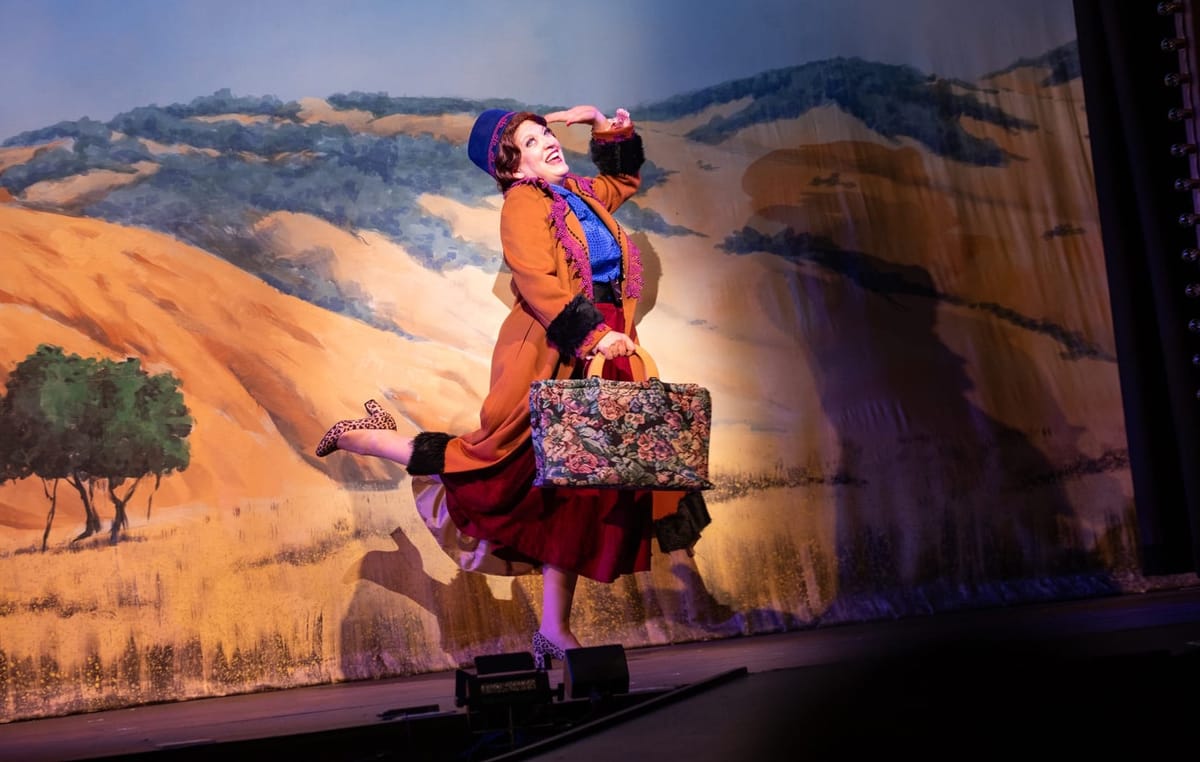A Wichita woman began studying Indian classical dance to keep her daughter company. Then she opened a school.
Manasi Kulkarni’s Kalakrit School of Art is part of a growing Indian classical dance community in Wichita. Two different performances will take place this weekend.
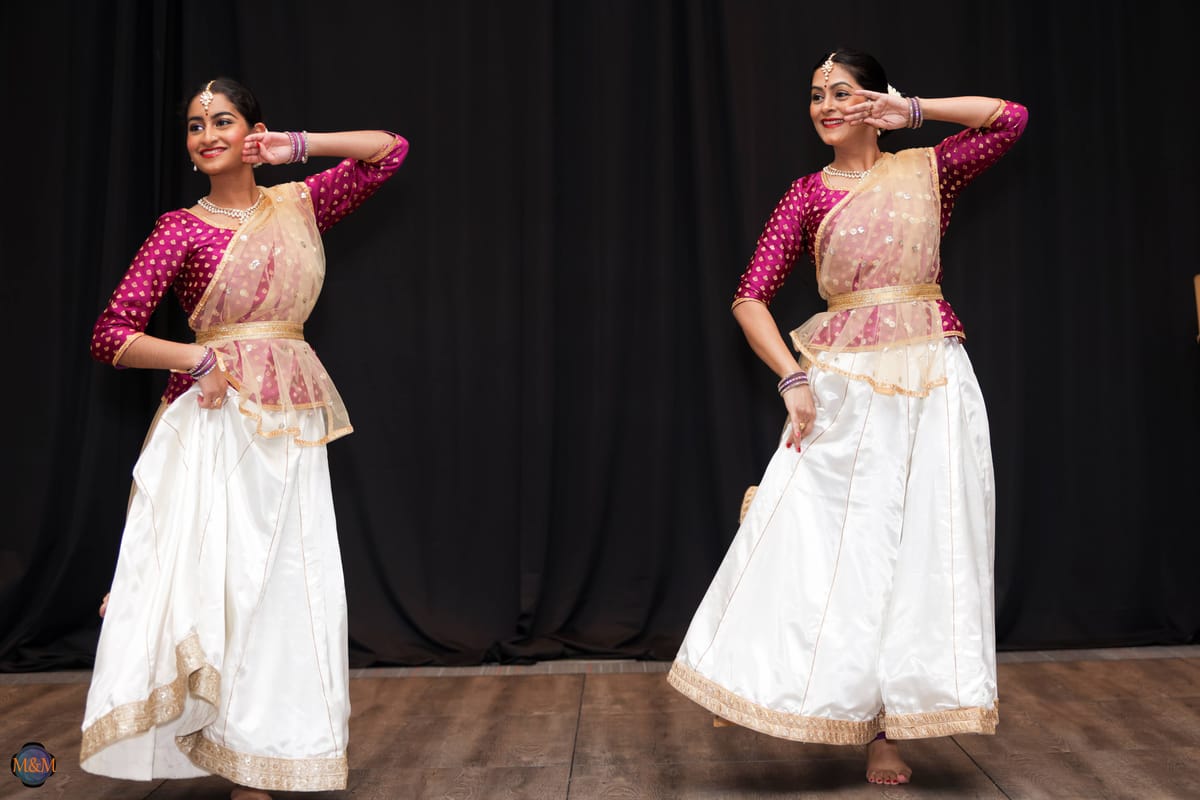
In the basement of a home on a quiet cul de sac in east Wichita, five little girls in matching outfits are practicing for their upcoming dance recital. They spin on their heels, point their toes, and articulate their fingers. With each step, the bells on their ankles jingle in rhythm with the music.
Occasionally their teacher Manasi Kulkarni offers instruction. “Keep it sharp,” she offers. “Make sure you look at your own hands — don’t look at each other.”
Kulkarni is the founder and artistic director of the Kalakrit School of Art, which centers on Kathak, one of several forms of Indian classical dance. Her beginner class is prepping for the school’s annual recital, which will be held at 5 p.m. Sunday in Wichita State’s CAC Theatre.
Kulkarni arrived in Wichita in 2001 to after marrying her husband Pravin Kulkarni, who moved to Wichita two years earlier to pursue a graduate engineering degree from Wichita State. (Both Kulkarnis have master's degrees from WSU, and they both work at Textron.) From 2010 to 2014, the couple lived in Bengaluru, India. By that time, they had two young children. When their daughter Tanisha was almost 5 years old, she began taking classes with Simran Godhwani, a Kathak guru, or teacher.
When the family returned to Kansas, Tanisha continued taking online lessons from her guru. At the time, Kulkarni didn’t know of any other Kathak dancers her daughter could practice with, so she joined in.
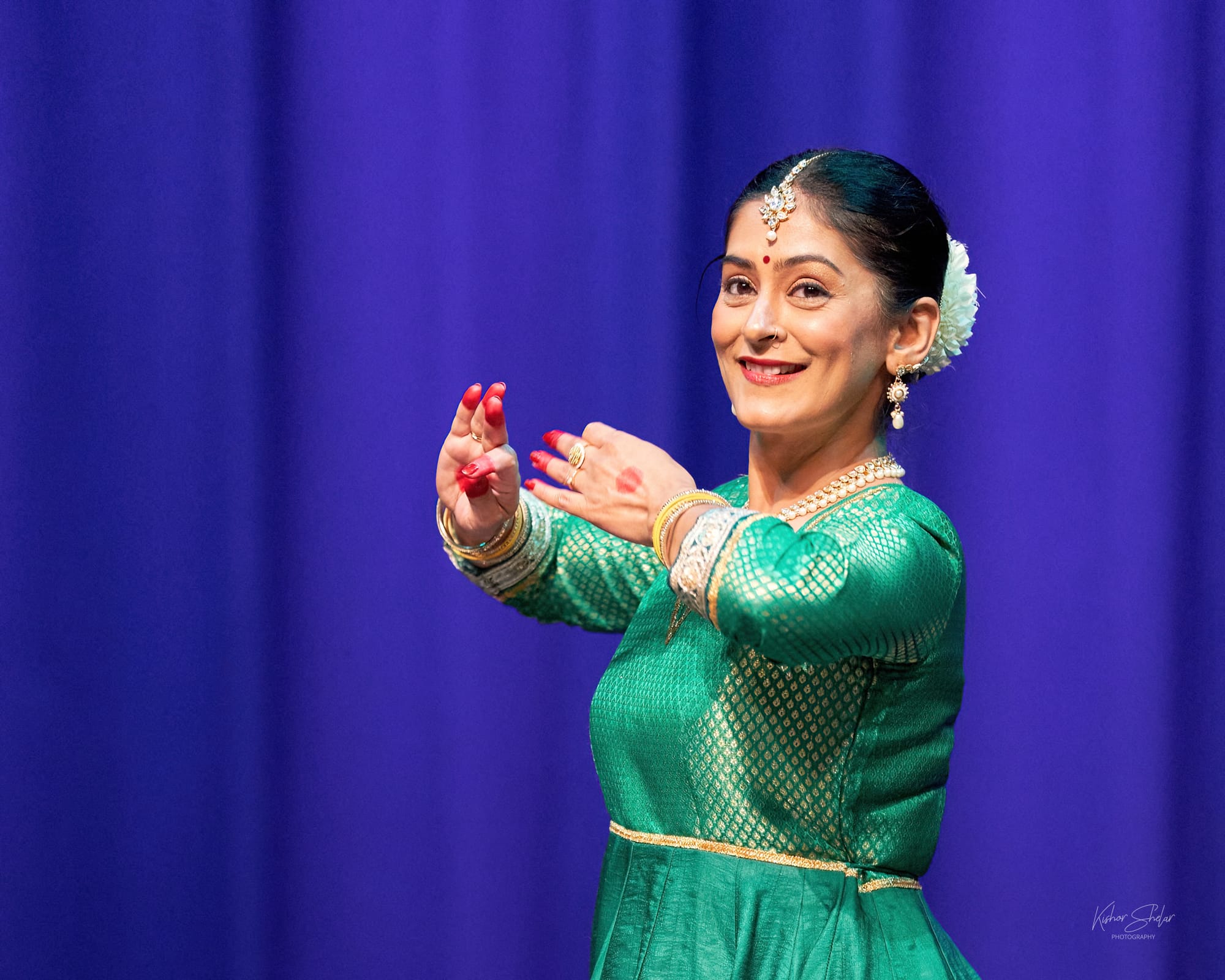
“She started learning to give me company,” Tanisha Kulkarni says. “I think that really helped me wanting to continue learning because I have somebody to dance with.”
The elder Kulkarni, who still works full time at Textron, launched a second career in 2018 when she began renting space at Safira’s Center for World Dance. During the pandemic, she shifted to giving lessons in her home. She teaches two classes of beginner and intermediate students — 15 in total, ranging in age from 5 years to 40-something.
“It has given me so much joy over the years,” she says. “Even on days when I’m tired, I put on the bells and feel so much energy.”
One of the most distinctive aspects of Kathak are ghungroos, the ankle bells that punctuate the dancers’ intricate footwork. As dancers advance in age and skill level, their teachers add bells to their ghungroos.
“The bells are meant to accentuate the footwork,” Manasi Kulkarni explains. A keen audience member can tell if footwork is executed properly just by listening to the sounds the dancers make with their ghungroos.
“The ankle bells are treated as a sacred thing — we worship them,” she says.
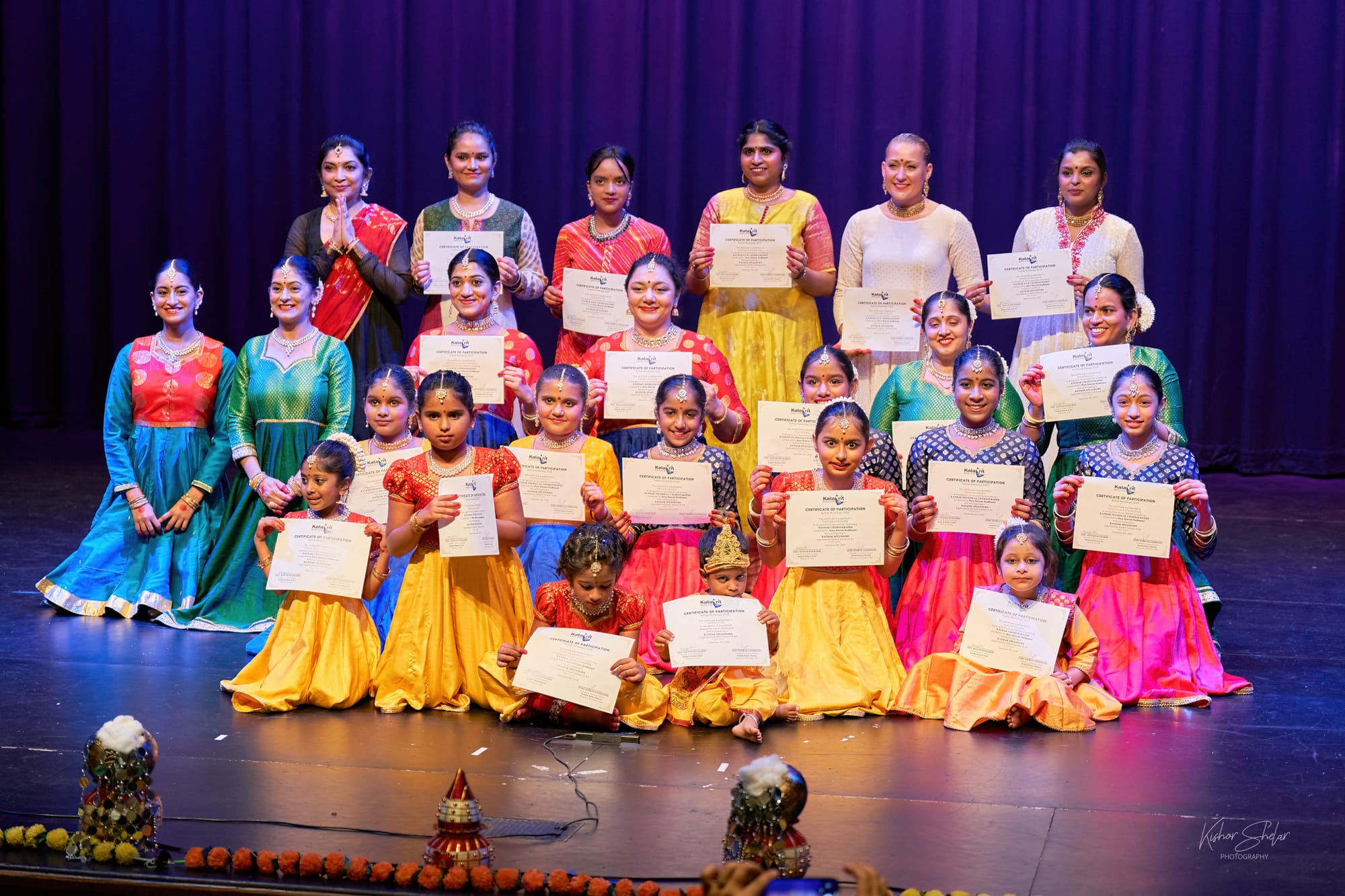
Indian classical dance forms were developed more than 2,000 years ago as a means of illustrating sacred Sanskrit texts. Kathak is composed of multiple gestures, each of which carry a specific meaning. Strung together in a piece of choreography, dancers tell a story.
“There is meaning to every gesture,” Manasi Kulkarni says. “It’s just like any other language. You have to learn the ABCs and how to form the words.”
A Kathak dancer can make 28 distinct gestures with a single hand, she says. The dual emphasis on emotional storytelling and technique appeal to both mother and daughter.
Our free email newsletter is like having a friend who always knows what's happening
Get the scoop on Wichita’s arts & culture scene: events, news, artist opportunities, and more. Free, weekly & worth your while.
No spam. Unsubscribe anytime.
“Footwork is definitely something that is very challenging, but learning a new footwork technique and then mastering it at a fast pace is probably one of my favorite challenges to overcome,” Tanisha Kulkarni says. “It gives me immense satisfaction once I finally get it.”
Manasi Kulkari performs choreograhy by Simran Godhwani, her longtime Kathak teacher, to music from the popular 2016 film "Dangal."
Tanisha graduated from the International Baccalaureate program at Wichita East High School this spring and will attend the University of Kansas this fall. In January, she notched another important milestone: her rangapravesh, the recital that marks her debut as a Kathak soloist.
The Kulkarnis are part of a growing community of Indian classical dancers in Wichita. Shyama Nair is a software engineer who has been teaching lessons in Bharatanatyam, another classical dance form, for the past six years. She also teaches 15 students, and she plans to open her own school, too.
Wichita audiences have the unique opportunity to watch Indian classical dance performances twice this weekend. In addition to the Kalakrit School of Art’s annual recital, Mark Arts will host Art Together: Incredible India from 10 a.m.-noon Saturday. The event includes a performance highlighting three different Indian classical dance forms: Kathak, Bharatnatyam and Oddissi.
Though Kathak and other Indian classical dance forms are distinctly Indian, they also have a relationship with other dance traditions. Kathak and flamenco share some traits, Kulkarni notes, such as complex musical rhythmic musical styles and percussive footwork.
Indian classical dance is also influenced contemporary dance. Some of the foremothers of dance in the U.S., such as Ruth St. Denis and Martha Graham, were inspired by and borrowed from cultural traditions. In 1931, an illustration of St. Denis in “a costume of India” appeared on a magazine cover.
Studying Indian classical dance gives students a foundation they can build on if they choose, says Nair, the Bharatanatyam teacher.
“Learning and practicing Bharatanatyam gives one better physical fitness, enhanced sense of balance and self-expression,” she said in an email. “It even gives one a base for learning any other dance forms like contemporary, freestyle, or other classical dance forms.”
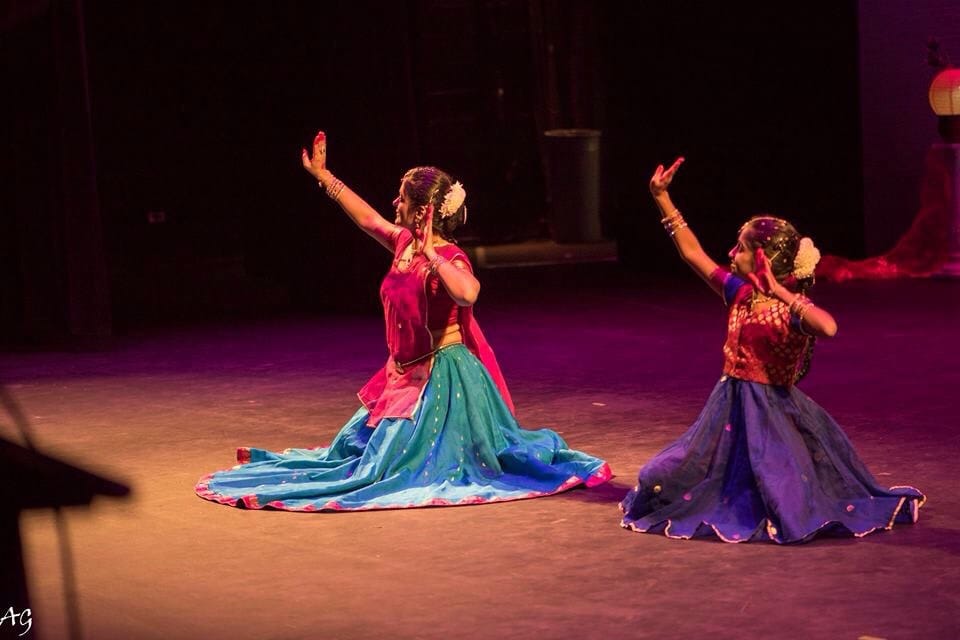
For the Kulkarnis, studying dance has also been way to nurture their mother-daughter relationship.
“We have a lot of fun together. Sometimes we even goof off during practice,” Tanisha Kulkarni says. “Dancing with her and seeing her passion has definitely brought us closer together.
“She is definitely the best dance partner I've ever had, and she's my favorite person to dance with, hands down.”
Learn more about the Kalakrit School of Art on the school's Facebook page and Instagram and YouTube accounts.
The Details
Art Together: Incredible India
10 a.m.-noon Saturday, August 10, at Mark Arts, 1307 N. Rock Road in Wichita
This family-oriented event includes storytime, art making, and multiple dance performances. “Converge: A Divine Union” includes dancers from three different Indian classical dance traditions: Sonalli Kurlekar, Lakshmishree Sivkumar, Suniva Das, Namita Shinde, Isha Ganesh and Manasi Kulkarni.
Free
Learn more.
Kathak Splendors: Kalakrit School of Art Dance Recital
5-6:30 p.m. Sunday, August 11, in the CAC Theater on the Wichita State campus, 1845 Fairmount St.
Manasi and Tanisha Kulkarni and students of the Kalakrit School of Art will perform 14 difference dances during the recital, each 4-7 minutes.
Doors open at 4:00 p.m.
$10 suggested donation
Learn more.
Correction: This story was updated on August 9 to reflect the fact that Manasi Kulkarni and her husband moved to Wichita in different years. We regret the error.
Emily Christensen is a freelance journalist and news entrepreneur based in Wichita, Kansas. She is a co-founder of the SHOUT.
Support Kansas arts writing
The SHOUT is a Wichita-based independent newsroom focused on artists living and working in Kansas. We're partly supported by the generosity of our readers, and every dollar we receive goes directly into the pocket of a contributing writer, editor, or photographer. Click here to support our work with a tax-deductible donation.
❋ Derby man has the kind of voice that turns heads — and chairs
❋ Socializing while sober: how some Wichitans are cultivating alcohol-free communities
❋ As a small creative business closes, the owner mourns
❋ Painting through it: Autumn Noire on 20 years of making art
❋ How a guy from Wichita resurrected 'Dawn of the Dead'
❋ Bygone Friends University museum housed curious collections
More from the SHOUT
 The SHOUTEmily Christensen
The SHOUTEmily Christensen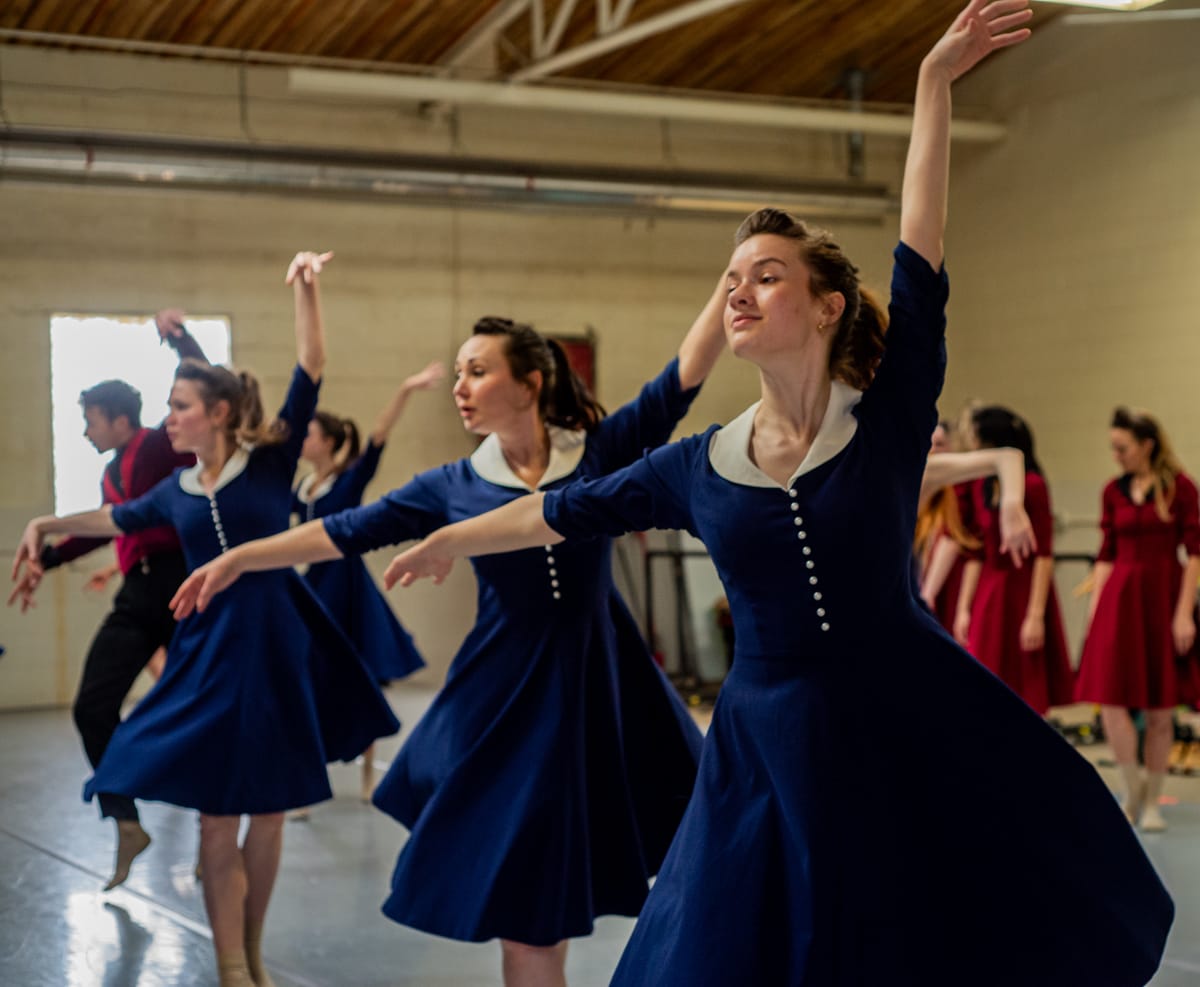
 The SHOUTMasara Al-Sharieh
The SHOUTMasara Al-Sharieh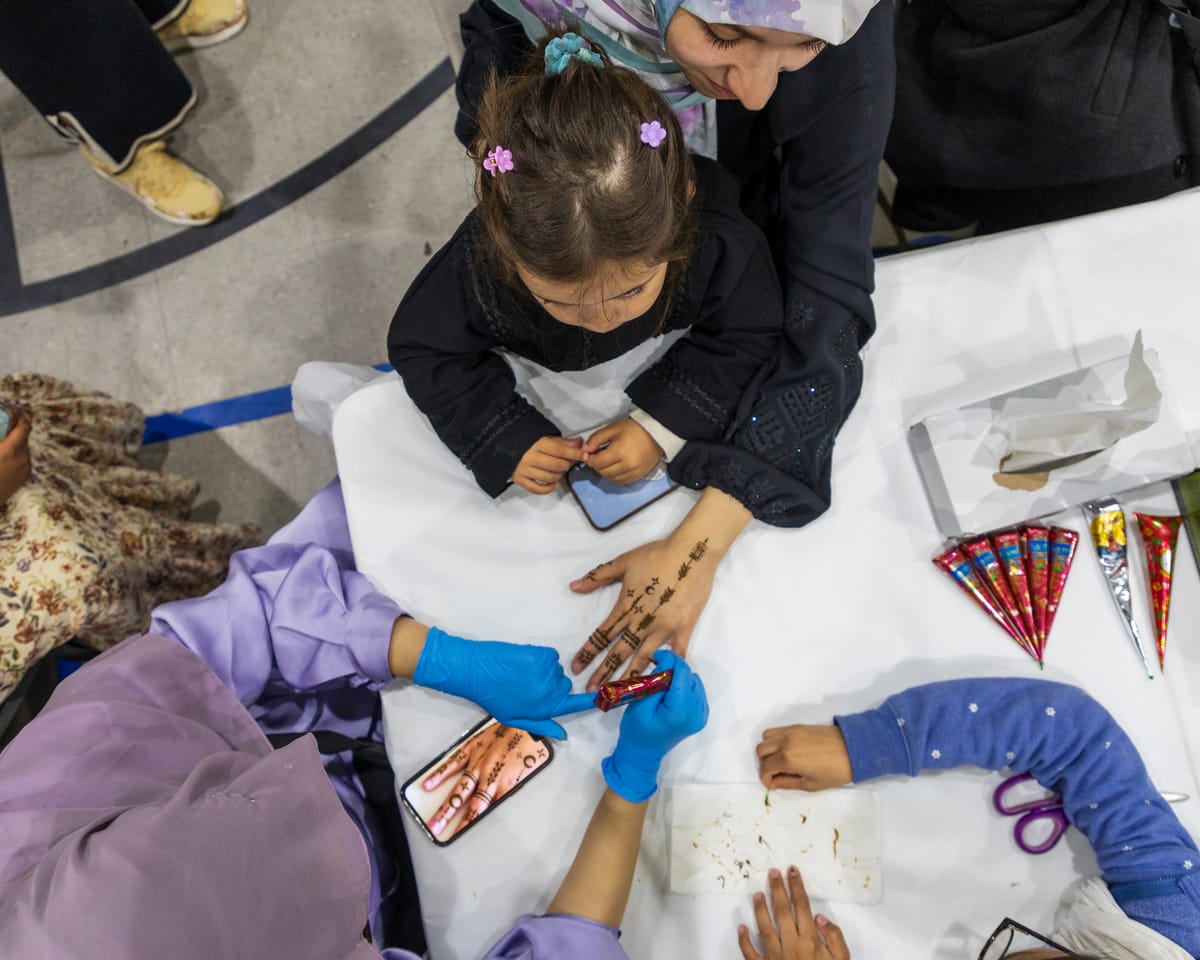
 The SHOUTFernando Salazar
The SHOUTFernando Salazar
 The SHOUTEmily Christensen
The SHOUTEmily Christensen